

In America's brief history, 45 presidents (or 46, counting Grover Cleveland's two terms) have showcased unique culinary tastes. Some favored French cuisine, while others indulged in fast food. Regardless of political differences, there's unanimous agreement on Richard Nixon's unappealing favorite food. Curious about what it is? Keep reading for each president's culinary preferences.
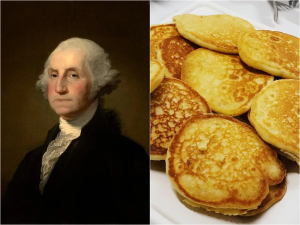
George Washington, the first U.S. president, had a favorite breakfast: hoecakes, a type of cornmeal pancake. Originating from indigenous communities along the Atlantic coast, hoecakes were a staple in early America. Washington enjoyed them daily, topped with butter and honey, accompanied by a cup of tea. A delightful and simple way to begin his mornings!
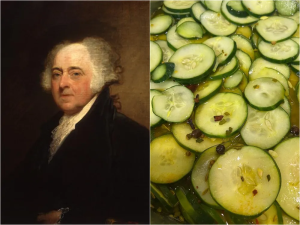
John Adams, America's second president, had a love for pickles and hard cider. He ate pickles daily and enjoyed a morning "gill" of hard cider during his time at Harvard University, finding it refreshing. This historical habit shows that some things, like college students' drinking preferences, haven't changed much over the centuries.
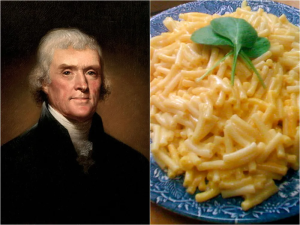
Thomas Jefferson loved mac and cheese more than any other food. He discovered it while on a trip to France and is actually credited with popularizing the dish in the United States after he served it at a State dinner in 1802.
Did you know that the beloved pasta dish dates all the way back to at least the 1300s? It was first (knowingly) recorded in an Italian cookbook called Liber de Coquina, one of the oldest known medieval cookbooks.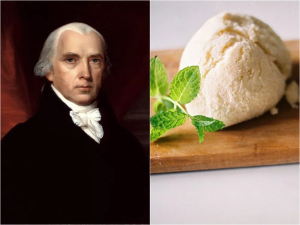
President James Madison had a sweet tooth, favoring his wife Dolley Madison's homemade ice cream despite her talent for cakes and cookies. Her culinary skills made ice cream popular during their White House days. Interestingly, there's an American bakery brand called "Dolly Madison" owned by Hostess, a nod to her culinary legacy.

James Monroe loved Spoonbread, a Southern dish similar to cornbread. Made with cornmeal, milk, butter, and eggs, it's more like a savory pudding. Originating in Kentucky and Virginia, where Monroe was from, it's a unique comfort food in the American South.

John Quincy Adams favored fresh fruit, particularly in the summer when options like grapes and plums were abundant. Back then, fresh produce was seasonal; winter made it hard to find, so people dried fruits for consumption. Adams' choice showcased his preference for healthier options during a time when fresh fruits were a rare treat.
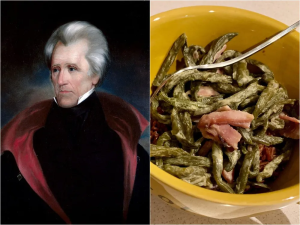
Andrew Jackson loved leather britches, a dish made by drying green beans in fatback, a type of pig meat. The beans were strung behind a wood stove until they looked like shriveled leather, hence the name. He also enjoyed "floating island," a dessert with meringue atop vanilla custard.
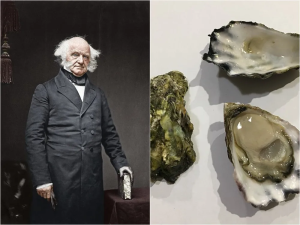
The eighth U.S. president, Van Buren, adored oysters. Known for his luxurious taste, he ensured his home dining was top-notch. He avoided sweets, opting for fruits over pastries and puddings, maintaining his unique culinary preferences.
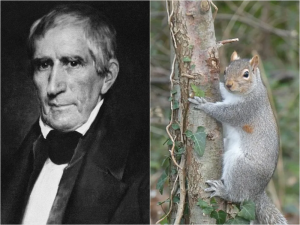
William Henry Harrison, the shortest-serving U.S. president, passed away 31 days after his 1841 inauguration due to typhoid. His favorite dish was squirrel stew, also called "burgoo," made from available meats like squirrel, opossum, and game birds. Quite unusual, right?

John Tyler, once Harrison's VP, became president unexpectedly. He had a sweet tooth for Indian pudding, a New England treat made from Indian corn cooked in milk or water. Although less common now, it's still recreated in some restaurants, especially during autumn, and often served with ice cream or whipped cream.
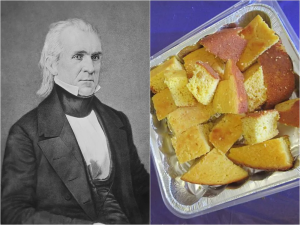
President James K. Polk enjoyed simple Southern dishes, like Corn Pone, similar to corn bread. He also relished tomato omelets, a vegan breakfast made with chickpea flour. This dish, served hot with tomato sauce or coconut chutney, reflects his diverse taste.
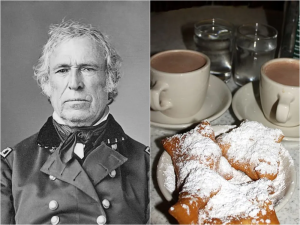
Zachary Taylor's brief presidency left him low in historical rankings. Despite this, his love for Creole food, especially calas, a sweet rice fritter, was well-known. Served with powdered sugar and café au lait, this culinary delight was a favorite of his during his time in office.
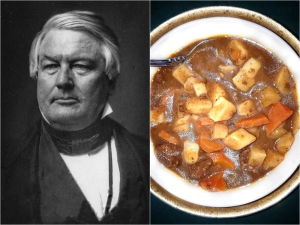
Millard Fillmore, a humble man, enjoyed basic meals even during his presidency. His favorite dish was a simple soup made with meat, potatoes, and vegetables. He preferred a straightforward approach: first, he consumed the broth, then the solid pieces, maintaining his unassuming lifestyle and tastes.
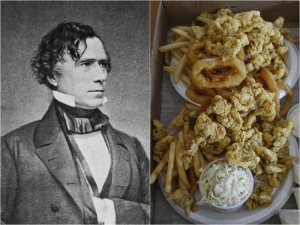
Franklin Pierce, not one for elaborate dining or entertaining, preferred simple, homey dishes from his New Hampshire roots. His favorites included fried clams, clam chowder, and apple pandowdy. Sometimes, comfort foods hold a special place in our hearts, and Pierce cherished them too.
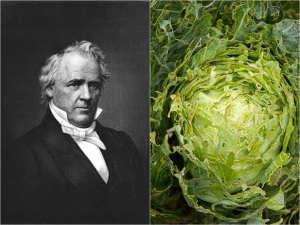 James Buchanan enjoyed gourmet foods, especially French and Pennsylvania Dutch cuisines, but his absolute favorite was cabbage. Despite having access to fancy foods as the president, he loved this humble vegetable. Interestingly, Buchanan never married, making him the only lifelong bachelor among U.S. presidents.
James Buchanan enjoyed gourmet foods, especially French and Pennsylvania Dutch cuisines, but his absolute favorite was cabbage. Despite having access to fancy foods as the president, he loved this humble vegetable. Interestingly, Buchanan never married, making him the only lifelong bachelor among U.S. presidents.
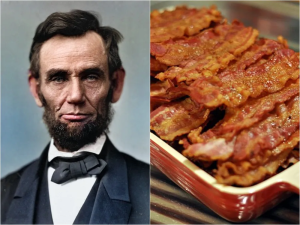
Abraham Lincoln had unusual eating habits due to his busy presidential schedule. He didn't fuss about his food, eating whatever was available without complaints. However, he particularly enjoyed bacon and occasionally indulged in apples, hot coffee, and gingerbread cookies.
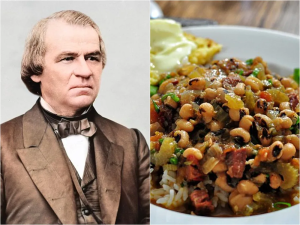
After Abraham Lincoln's assassination in 1865, Andrew Johnson became president. Johnson, who narrowly avoided impeachment, enjoyed Southern comfort foods like Hoppin' John (black-eyed peas, rice, onions, and bacon) from his North Carolina upbringing. He also had a fondness for sweet potatoes.

As a war hero, Ulysses S. Grant cherished family meals, especially dinner, free from rules. He loved breakfast, favoring Spanish mackerel, steak, bacon, and fried apples. Yet, his top choice was lemon-flavored rice pudding.

Rutherford B. Hayes loved cornmeal pancakes, a White House favorite thanks to First Lady Lucy Hayes's famous recipe. Corn's popularity in presidential foods stems from its indigenous roots in the Americas, cherished for generations across North and South America.
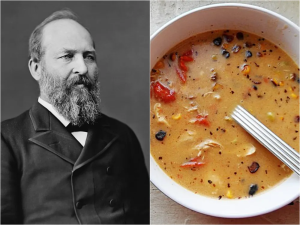
Surprisingly, James A. Garfield, like William Henry Harrison, enjoyed squirrel stew. Despite his stomach troubles, Garfield cherished this dish along with his love for milk. Despite difficulties, he found joy in these simple pleasures.
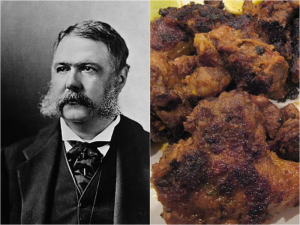
Upon reaching the White House, Chester A. Arthur hired a French chef. His meals often mirrored his distinctive mutton chops: rare roast beef, seafood, macaroni pie, and turtle steak. The turtle hunting tradition in Cape Verde, where the dish originated, has thankfully been outlawed since then.

Grover Cleveland didn't fancy French cuisine like his counterparts. He preferred humble dishes like corned beef and pickled herring, even bringing his cook to the White House. Despite his simple tastes, he's considered one of the unhealthiest U.S. presidents.
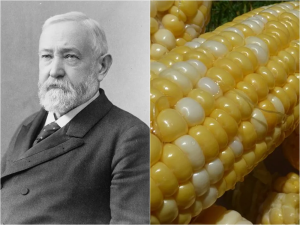
The Harrisons had a preference for simple dishes, such as corn with butter and salt. Additionally, they enjoyed corn soup, which was a family favorite. Notably, First Lady Caroline Harrison had a strong passion for fine cuisine and even created her own cookbook.
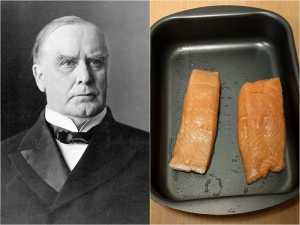
William McKinley preferred plain and simple foods like meat and boiled fish. He and the First Lady were hearty eaters and enjoyed hot bread, potatoes, steak, and eggs. Tragically, he was assassinated after his second inauguration.
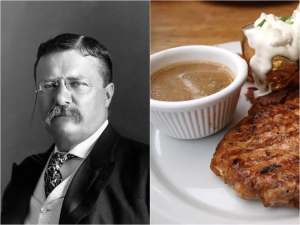
As the youngest person to become President, Teddy Roosevelt had a preference for simple foods such as steak and gravy, despite his family's wealth. He did not have a taste for anything exotic, and was known for enjoying a large cup of coffee.
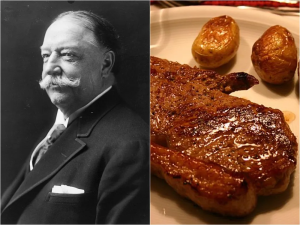
William Howard Taft, the heaviest president to date, loved classic foods like steak and potatoes. A bigger bathtub had to be installed in the White House during his presidency.
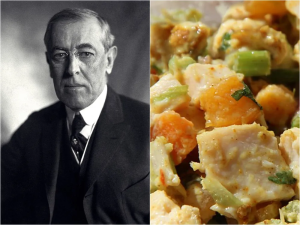
Woodrow Wilson wasn't interested in food and his low weight concerned the White House doctor. He loved chicken salad and occasionally had strawberry ice cream for dessert.
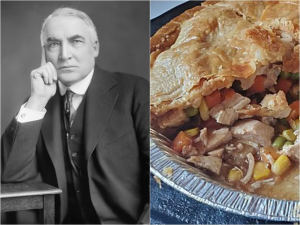
Warren G. Harding loved chicken pot pie, a classic Midwestern dish. The recipe was brought to the White House by First Lady Florence Harding.
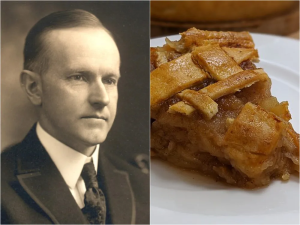
The 30th US president, Coolidge, loved apple pie, a true American classic. He had quirky meal habits, dining in formal clothes and calling all meals "supper." His love for pie made him just like any apple pie-loving American.

Herbert Hoover loved a unique dish: sweet potatoes with marshmallows, still seen on Thanksgiving tables today. Sweet potatoes were a traditional American food, while marshmallows were created in the late 1800s. The first recipe for this combo was published in 1917. Don't judge until you taste it!

During FDR's time, America faced the Great Depression and World War II. He loved simple foods like grilled cheese, hot dogs, and scrambled eggs, reflecting what many Americans ate then. Interestingly, he served hot dogs to the Queen of England, showing what ordinary Americans were eating.

Harry Truman wasn't choosy about food and learned to eat anything in the army. But he had a strong preference for well-done steak, saying only wild animals eat raw meat. He didn't mind what he ate, except for his favorite, steak, cooked his way.
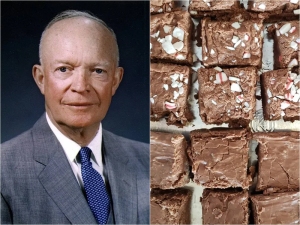
Dwight D. Eisenhower loved cooking and made meals for his family and guests at the White House. His favorite was his wife Mamie's Million Dollar Fudge. You can find the recipe online and try making it too!

John F. Kennedy, a Boston native, loved New England clam chowder over Manhattan style. He wasn't a big eater and had to be reminded to eat. In 1961, he shared his chowder recipe with a girl who asked about his favorite food.

LBJ, a Texan, loved barbecue and introduced it to the White House. His favorite meal included beef barbecue, beans, and fried apple pies. Despite politics, his taste in food was impressive!

Nixon faced the Watergate scandal and resigned. His odd favorite: cottage cheese with ketchup. Weird taste, right?

Gerald Ford became the 38th US president in 1974 after Nixon's resignation. He was VP due to Agnew's exit under the 25th Amendment. Ford loved waffles with sour cream and strawberries for Sunday breakfasts.
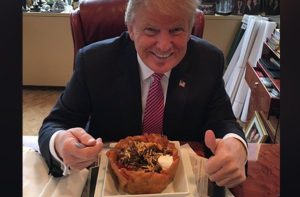
The 45th US president really liked fast food while in the White House, especially McDonald's and Burger King. He even had it delivered to his private jet. He made headlines for treating sports teams, like the Baylor University women's basketball team, to Wendy's, Chick-fil-A, and McDonald's when they won in 2019.
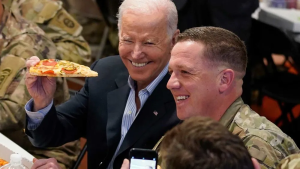
Ever wondered what President Joe Biden likes to eat? While there isn't much public info, he keeps it simple. Like the 45th president, he enjoys fast food. Plus, he's into Italian dishes, possibly due to First Lady Jill Biden's Italian heritage. Keep scrolling for more posts!